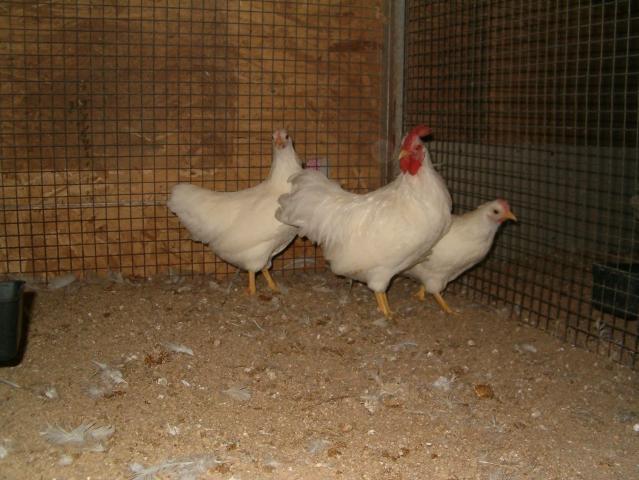Peach Laced Lamona's, this color pattern never wanted to breed true, but every one that I produced was just as good as the previous. Just that if I hatched 20 chicks, I would only get one peach laced. If you look close at the males sickle feathers you can see the nice lacing. I hope when you click the image the picture you see is large, I did that so that you could easily see the lacing. The hen does have a dark feather on her wing, cause I am sure someone will notice that.  )
)


 )
)

Last edited:




